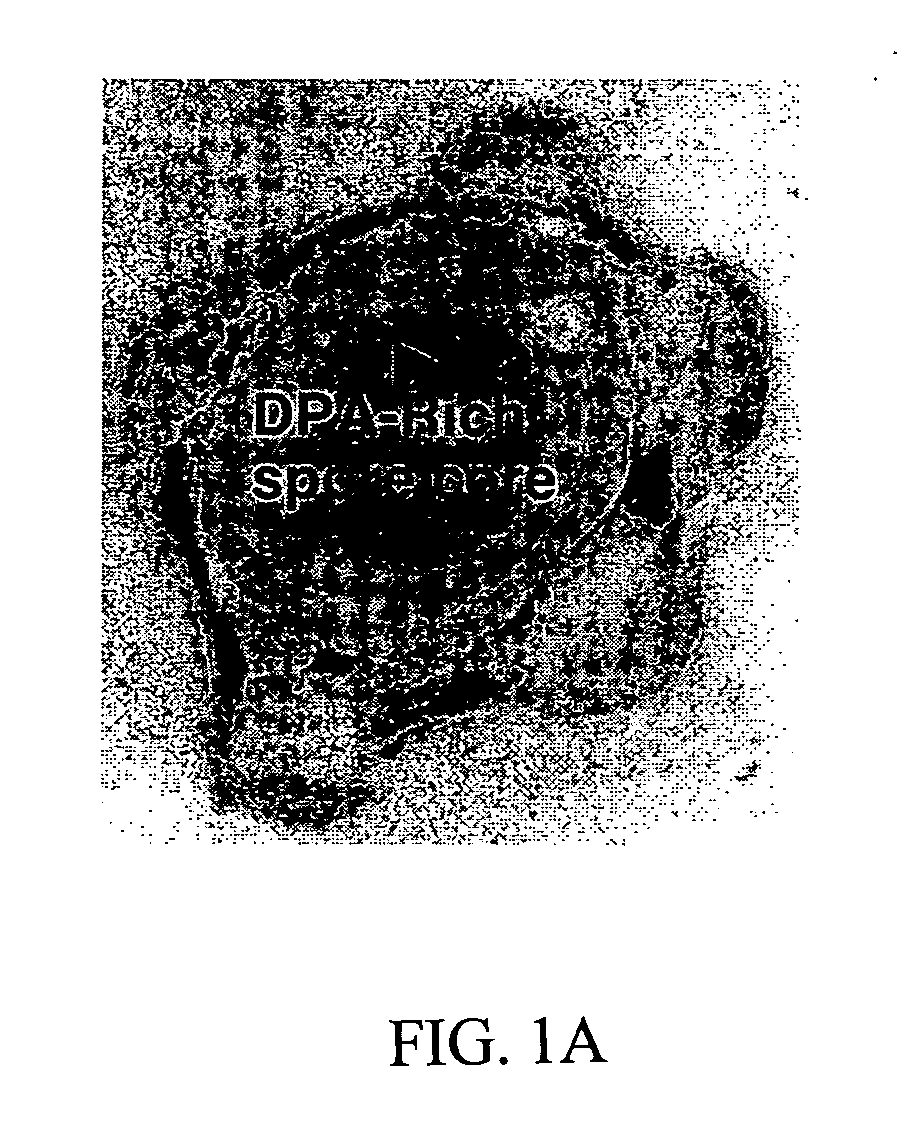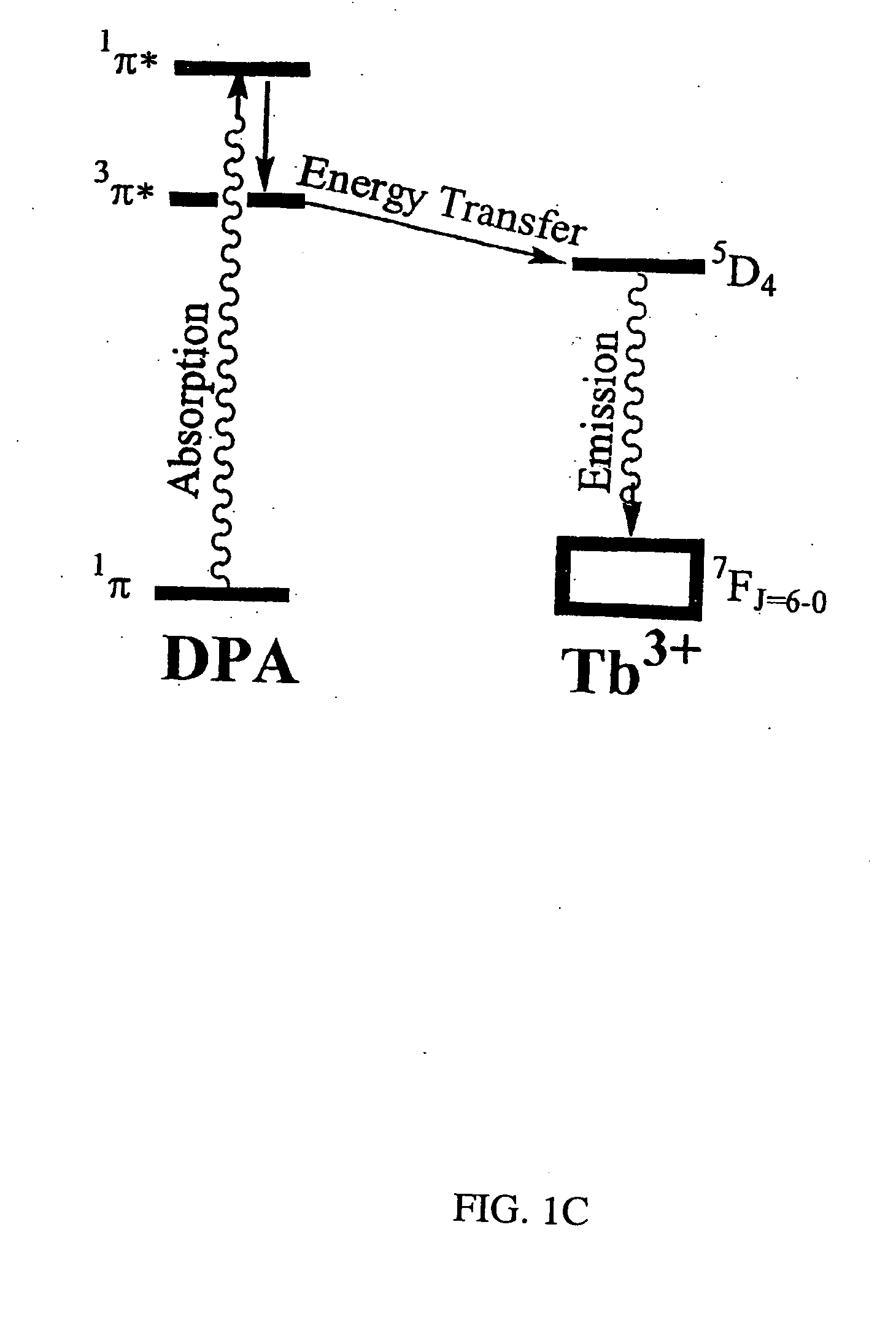Method and apparatus for detecting and quantifying bacterial spores on a surface
a technology of bacterial spores and methods, applied in the field of chemical detection, can solve the problems of large underestimation of bioburden, process takes 3-5 days to complete, and many limitations of culture-dependent methods
- Summary
- Abstract
- Description
- Claims
- Application Information
AI Technical Summary
Problems solved by technology
Method used
Image
Examples
example 1
[0045] Bacteria spores were immobilized onto a test sample surface of thin, flexible, clear, adhesive polymer polydimethylsiloxan (PDMS). PDMS was doped with L-alanine to induce germination and generate local high concentration of DPA. TbCl3 was also doped into the PDMS sample. The bacterial spores immobilized on the L-alanine and TbCl3 containing polymer was physically lysed by microwave irradiation, wherein DPA was released and luminescence was turned on. The detection of bacterial spores on the PDMS adhesive polymer was manifested itself as a bright green luminescence that was imaged with a lifetime gated microscope. The green dots within the microscope field of view were counted to determine the concentration of viable spores found on the surfaces that was sampled. Therefore, every bacterial spore releasing luminescence can be individually counted. A concentration of 10,000 bacterial spores per 1 ml as in comparative example 1 or 1,000,000 bacterial spores per 1 ml in comparativ...
PUM
| Property | Measurement | Unit |
|---|---|---|
| Melting Point | aaaaa | aaaaa |
| delay time | aaaaa | aaaaa |
| integration time | aaaaa | aaaaa |
Abstract
Description
Claims
Application Information
 Login to View More
Login to View More - R&D
- Intellectual Property
- Life Sciences
- Materials
- Tech Scout
- Unparalleled Data Quality
- Higher Quality Content
- 60% Fewer Hallucinations
Browse by: Latest US Patents, China's latest patents, Technical Efficacy Thesaurus, Application Domain, Technology Topic, Popular Technical Reports.
© 2025 PatSnap. All rights reserved.Legal|Privacy policy|Modern Slavery Act Transparency Statement|Sitemap|About US| Contact US: help@patsnap.com



